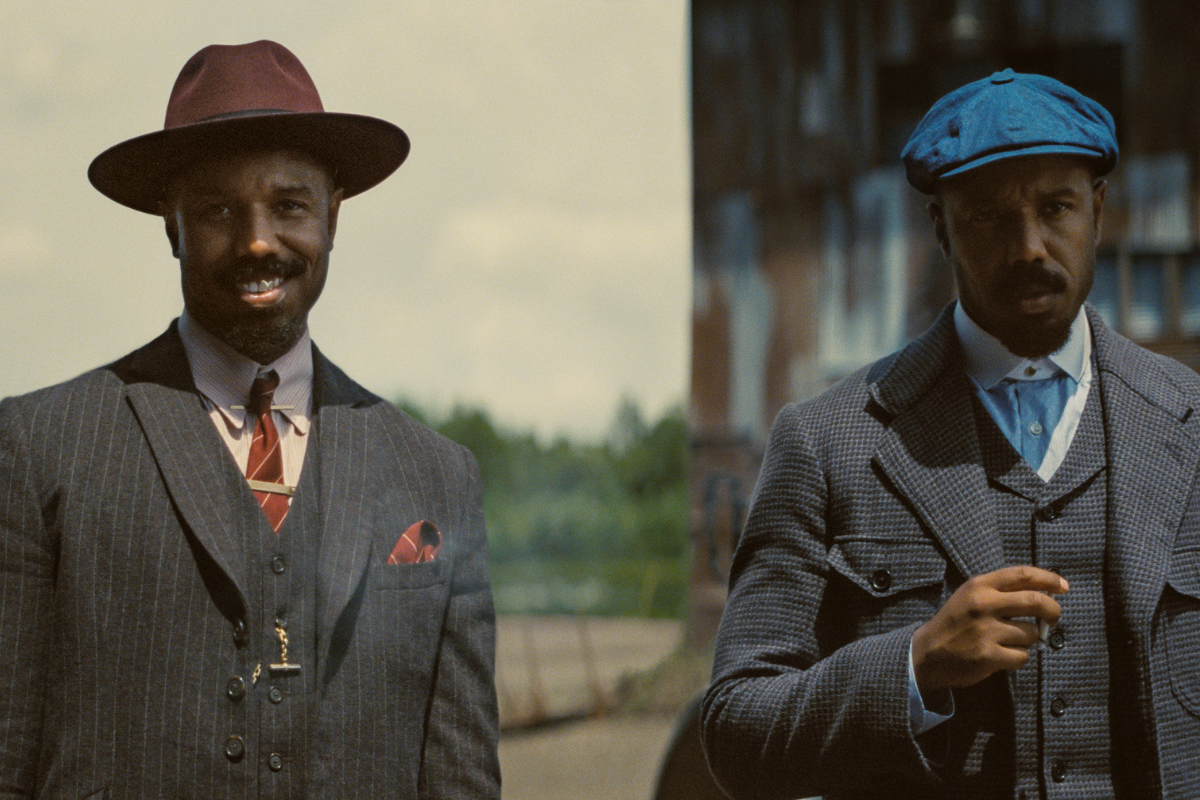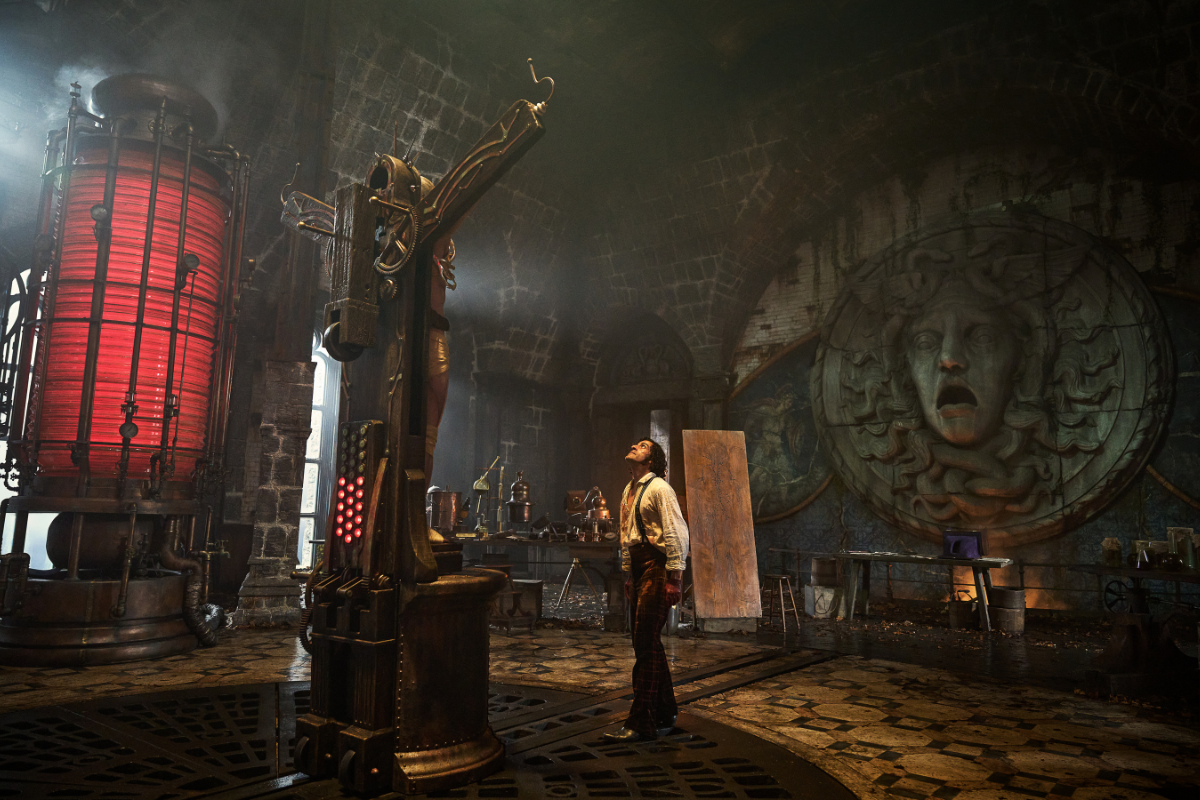Qi Cheng Zhuan Jie (起承轉結): The Chinese Four-Act Screenplay Structure, Part 1
Many Chinese feature film screenplays are based on the four-act structure. In this deep-dive, two-part series, Dimitri Vorontzov explains how exactly that model works, in what way is it different from Hollywood’s three acts, and what the functions are of each of the Chinese four acts in a movie script.
Story Rhetorics
Stories exist to make a point, and the familiar three acts of a standard Hollywood screenplay help us communicate that point with conviction.
The majority of American movie scripts today are based on a three-act model, and, since the early Chinese screenwriters learned their craft from Hollywood, a considerable number of Chinese movies are structured that way, too.
But not all of them!
In fact, throughout history, whenever Chinese thinkers, government officials, artists and storytellers needed to persuade anybody of anything, they used not the Western three-part model of reasoning, but a four-part Chinese alternative!
This four-part model is known as Qi Cheng Zhuan Jie (起承轉結) – and it’s one of the core aspects of the traditional Chinese mentality, much like thinking in “threes” is for Westerners.
That’s why, as you probably guessed, many Chinese feature film screenplays are based on the four-act structure.
So, how exactly does that model work, in what way is it different from Hollywood’s three acts, and what are the functions of each of the Chinese four acts in a movie script?
Let’s find out together!
Four-Act Structure In a Nutshell
Here’s the Qi Cheng Zhuan Jie structure, at a glance:
Act 1. Qi: Setup;
Act 2. Cheng: Development;
Act 3. Zhuang: Redirection;
Act 4. Jie: Conclusion.
Probably the simplest example of such structure is a famous poem “Quiet Night Thoughts,” composed by the great Chinese poet Li Bai, here presented in my perhaps imperfect, but close-to-the-original translation:
Moonlight next to a bed –
Or is frost on the ground?
I look up and gaze at the moon,
I bow down and think of home.
The remarkable thing about this poem is how cinematic it is! Its pristine language could serve as an example of proper screenplay style: No decorative elements, no redundancies.
What about its structure?
Setup introduces an observed phenomenon: Moonlight next to a bed. With a single brushstroke, it establishes the time (night) and the setting (a bedroom).
Development builds further on what’s already established, and expands its emotional impact, poetically comparing bright moonlight in an enclosed room with white frost in the open field.
Redirection reveals to us the true subject of the poem: It’s not about moonlight or frost, but about a human being! There’s a plot twist here: We thought the room was empty… and suddenly we realize there’s someone else in here with us.
Conclusion brings the previously established simple images together and connects them via the new surprising element: home. The pieces of the puzzle suddenly “click together” and create a moment of deep emotional realization: The poem is a cry of a lonely soul away from the beloved land and the dear ones!
This is how the four-part structure works in a poetic miniature, and the same principles apply to a dramatic work on a much larger scale, such as a feature film screenplay.
Let’s take a closer look at each of the four acts and review some movie examples!
The Four Acts: A Closer Look
Act 1: Qi (起) – Setup
“Qi” by itself means, literally, “up,” or “upward.” In combination with other characters “qi” means “begin,” “emerge,” “rise,” “set up,” “origin,” “starting point.”
I chose the English word “Setup” to translate “Qi”: While not being a literal translation, it conveys the purpose of the first act well enough.
The first act of the Chinese four-act screenplay structure is in many ways similar to the first act of a Hollywood screenplay, and for a good reason: If we’re to tell a story, we must begin by setting it up – in China, Hollywood, or any other place in the world.
In the first act, we establish the genre, the style, the timeframe and the location of the story.
We also introduce some of the key characters – for example, the protagonist, the antagonist and their allies – and show what makes them suffer and what gives them joy, how they put food on the table, what their strengths and weaknesses are, and what inner and outer problems they’re struggling with.
All of these things are obligatory, because they establish the initial balance of the world of the story. It’s like setting up pieces on the chessboard: The game can’t start until all pieces are there.
Then of course we must undermine the balance we’ve established, and we do that by introducing the main conflict of the story. (One of the chess pieces making the first move.)
Once the conflict is triggered, our main character may be reluctant or eager to get involved, but eventually he or she will either voluntarily commit to the conflict, or will be forced to take part in it.
All of these things equally apply to the first act of a Hollywood three-act screenplay and to the first act of the Chinese four-act one.
On a more granular level, first acts of Chinese screenplays often contain several unique and fascinating components unlike anything used in Hollywood movies – but from the point of view of the general “large-scale” form, both kinds of the first act – the Hollywood and Chinese one – are virtually identical.
Let’s review a simple example: a classic Chinese film Waves Washing the Sand (浪淘沙 – 1936, directed by Wu Yonggang).
The movie opens with a short, dramatic prologue: Waves rolling over a seashore – and two sun-bleached human skeletons, handcuffed together.
The protagonist, Ah Long, is a naive young sailor returning from a dangerous sea voyage to his wife and small daughter. Carrying home packs of presents, he’s filled with happy anticipation of a family reunion.
But as he enters his house, Ah Long discovers his wife with another man. In a fit of jealous rage, Ah Long murders his wife’s lover – and flees the crime scene. Just like that, Ah Long’s life has changed: He’s now a murderer, a wanted man on the run from justice!
A ruthless, cynical police inspector Liao Zhang – the antagonist – takes the case, finds it boring, and declares that the murderer has nowhere to hide, and will soon be caught. And indeed, Ah Long, tormented with remorse, tries to sneak back into his house at night to see his daughter Xiaolong – but inspector Liao Zhang and his police team ambush and nearly catch him.
Running from the police, Ah Long jumps over the fence, scales a building wall and manages to hide in plain sight. He runs to the harbor, but the unstoppable inspector Liao Zhang follows him there and unleashes a service dog at him. To escape the dog, Ah Long throws himself into the sea, Liao Zhang fires at him, emptying his revolver into the waves, but narrowly misses, and Ah Long escapes, swimming underwater. The enraged inspector pledges that he will find Ah Long and brings him to justice: No criminal has ever escaped Liao Zhang.
A powerful, dynamic, masterfully written first act, building up from a quiet opening scene to a frenetic chase sequence filled with suspense and action. It would be quite in place in any classic or contemporary Hollywood movie, and it feels perfectly American in its execution.
But then small differences begin to emerge.
Act 2: Cheng (承) – Development
”Cheng” can be translated as ”to bear,” “to support,” “to carry.” This act advances and expands the story by providing the supporting evidence, illustrations and necessary details.
I chose “Development” as the English name of this act, because it appears to encapsulate all these nuances of meaning.
Just like in a Hollywood three-act structure, the second act in a Chinese four-act screenplay usually begins after a major, irreversible turning point, and it may introduce contrasting material – something like “magical world”, compared to the “ordinary world” of the first act (as described in Writer’s Journey, a great book by Christopher Vogler).
Also like in a Hollywood screenplay, the Chinese second act often entertains the audience, exploring the rules of the new world, and introduces (or activates) a major new character or several such characters, to provide a fresh perspective for the main theme of the story.
But where the Hollywood screenplay leaves its first act behind, and races forward in pursuit of its goal, the Chinese “Cheng” act holds on to the earlier material on some deep, fundamental level, both through logical progression and through some common elements.
In other words, Hollywood second act is future-facing, while the Chinese second act is somewhat more retrospective by comparison.
Rather than pushing through in the efficient, businesslike, aggressive and cheerful American manner, it takes time to deepen and widen the audience’s view of the moral problem articulated in the first act. It expands on the meaning of the first act, enriches it with new dramatic situations, emotions and images. It also further increases the audience’s empathy to the protagonist.
Most typically, all of these things are achieved through relationships between the protagonist and other characters, covering wide emotional range. In many Chinese movies, “Cheng” is the “relationships and emotions” act.
In the second act of Waves Washing the Sand, having escaped the cops, the fangs of a vicious dog and the bullets from the inspector’s revolver, the sailor-turned-murderer Ah Long roams the streets of Shanghai, hungry and despondent, his own face staring at him from the “wanted” poster on every wall, the relentless Liao Zhang always a step behind him, breathing down his neck.
At night, tormented by anxiety, sorrow and guilt, Ah Long dreams of his little daughter, but the face of the ruthless inspector Liao Zhang mocks him in his dreams. Eventually, Ah Long escapes his pursuer, enlisting on a passenger steamer. “I no longer have any home,” Ah Long tells a fellow sailor. He seeks to dull his grief by hard work, shoving coal into the furnace day and night – but the hellish vision of the inspector's face haunts him even here.
Inspector Liao Zhang, in the meantime, can’t let go of the memory of one criminal who got away from him: Unable to focus on his current cases, the inspector keeps flashing back to the moment when Ah Long slipped through his fingers.
One day, resting on a passenger deck of a steamer, Ah Long makes friends with a little girl who reminds him of his daughter. He chats with the girl and shows her a magic trick, and there’s a brief moment of emotional connection between the two, when Ah Long wipes out tears and the girl asks him why he’s crying. But then the girl’s mother emerges from a passenger cabin and whisks her away. The protagonist remains alone on the deck, dealing with unbearable inner pain.
As you can see, not much external action is happening in the second act of this film. It appears meditative and static – especially in comparison with the exhilarating, dramatic first act. The power of the “Cheng” act is internal – it grabs you by the heart.
Why is such emotional exploration of the events, characters and themes established in the previous act so important in Chinese screenwriting?
Probably because, according to Chinese worldview, without such exploration, only the husk of the dramatic form would remain, and the inner essence would be lost. And the difference between empty form and the living essence is like that between a plastic mannequin and a human being.
When it comes to the four-act structure, the essence is explored in the second act – but it is revealed in the third act.
Act 3: Zhuang (轉) – Redirection
“Zhuang” means “to turn,” “to revolve,” “to change direction,” “to circle around,” “to reverse,” “to shift gears,” “to transfer” – to change.
I chose the term “Redirection” to describe this act – even though this may not be a precise literal translation of the Chinese character, but, as you’ll see in a moment, it best fits the unique nature of the “Zhuang” act.
This act must open a stunning new perspective, a fascinating, unexpected way of looking at the characters and the conflict that had been established during the first two acts.
This act is marked by switching from a regular system of relating, thinking and behaving to the extraordinary or transcendental one – and this new vision is included in the story not just to scandalize the audience, but because actually that’s what the story was about from the very beginning!
It’s as if the veil of the illusion has been lifted, and the astonishing true essence of the story is revealed. It’s a “paradigm shift.”
The power of this act is rooted in its ability to deliver simultaneous intellectual and emotional “shock and awe” to the audience.
Due to the nature of the “Zhuang” act, it requires a major turning point or even a plot twist. Such plot twist can be placed between acts two and three – or it can be delayed and positioned somewhere within act three. In some Chinese stories, there could be multiple plot twists here, that keep throwing the audience off-balance.
But in either case, this act, either in the beginning or sometime later, should introduce radically contrasting story material. Yes, the second act was contrasting compared to the first one – but this new contrast between the third act and the preceding material must be massive.
It may take place in a new setting – unlike any location or set previously seen in the story, or even perfectly unexpected for a story in a given genre. It may happen in the past, or in the future, or in the mind of a character – outside of the previously established temporal flow of the story, and out of sequence. It’s very likely to have an entirely new conflict.
It may abandon the character previously established as the lead, switch to a different protagonist, or invert the character relationship and reveal the character previously established as the antagonist or even a minor episodic player to be the actual protagonist of the entire story!
Relatively often, in this act the characters who were earlier established as mortal enemies, find themselves on the same side. The protagonist is revealed to be similar to the antagonist in some thematically relevant way, or the antagonist turns out to be in some ways more human or relatable than we at first thought – or a new, unexpected, grander conflict and much higher level of antagonism emerges out of the shadows.
Whatever kind of redirection occurs here, there’s one crucial thing about this act that you must grasp: It is only here that the actual story begins.
Everything else that happened until now turns out to be only an extended prologue! But every event in the preceding chain was purposefully leading to this.
In the third act of Waves Washing the Sand, months or maybe years after the events described in the previous acts, the police inspector Liao Zhang takes an ocean journey on some occasion. Traveling by a steamer, he leaves his cabin on a dark, foggy night to smoke a cigar on a deck, but forgets his matches, and asks a sailor smoking nearby to give him a light.
The two men stand side by side in silence, enjoying their smoke and peering into the fog… until Liao Zhang recognizes Ah Long, the murderer who got away. The inspector draws his revolver, confronts Ah Long and prepares to arrest him... and that’s when the steamer hits an underwater rock, capsizes and begins to sink.
Ah Long survives the shipwreck, swims all night, and reaches a tiny, barren island covered with sand and rocks. There’s no food here, and no fresh water, except for a tiny amount in a barrel that’s washed ashore. But there’s one other survivor: inspector Liao Zhang.
Enemies in the bigger world, here, on this island, the two men are just fellow sufferers. The island, surrounded by reefs, is far away from any sea routes. There’s no way to escape from it. After they finish drinking all the water remaining in the barrel, they will die a slow, painful death.
This is where their story really begins. It was a story of two men on a desert island! Everything else before it was just a setup.
For several days, Ah Long and Liao Zhang languish under the scorching sun. Tormented by heat and thirst, the former police inspector grows desperate: He runs to the sea and tries to drown himself – but Ah Long stops him. Moved by compassion, Ah Long offers Liao Zhang all the remaining fresh water. But Liao Zhang rejects Ah Long’s sacrifice: It can only prolong his suffering. Instead, he implores Ah Long to kill him.
Ah Long acknowledges his grudging respect to Liao Zhang, and agrees to kill him out of mercy. He finds a large rock, raises it over Liao Zhang’s head… and throws it away. He can’t kill a man in cold blood!
As you can see, the first and second acts of this film can be interpreted as merely an extended overture, leading up to the actual story that begins only in the third act. The essence of this story is not “a cop chasing a murderer” – but “two former enemies united in peril.” That’s a very different kind of conflict and even a different genre! This new material transcends everything that occurred in the story before, even though it was meticulously set up during acts one and two.
Among a few other things that occur in this act of the story, a subtle additional redirection takes place here: Liao Zhang, a heavyset, baby-faced police inspector suffers greater pains from the heat and dehydration. He’s now the underdog, and for that reason the audience begins to emphasize with him more. The two characters switch roles: Liao Zhang is now the protagonist!
What happens next?
I’ll tell you in a moment. But first, let’s take a closer look at the inner workings of the final act of the Chinese four-act structure.
Act 4: Jie (結) or He (合) – Conclusion
This act is known under a couple of different names, which slightly complicates things. The literal translation of “Jie” is “knot” – also “tangle,” “entangle,” “entanglement.” The alternative term, “He,” can be translated as “fit” – as in “fit together” – and in combination with other characters usually means “join,” “match one thing to another,” and also “close,” or “shut.”
I chose to translate the name of the final act as “Conclusion” (from Latin “con” – “together, with” and “claudere” – ”to close”). I feel this term is sufficient to express the nuanced combined meaning of the two Chinese terms: “the closure that connects the components of the preceding argument.”
That’s exactly what this act does. It brings together multiple aspects of the theme that had been established earlier, connects them in a final dramatic confrontation, and allows the strongest point of view to emerge victorious.
Here we can let the audience re-experience some of the ideas and dramatic situations introduced in the “Qi” and “Cheng” acts, and re-evaluate, re-examine them in the light of discoveries made in the “Zhuang” act.
There may be something new here – a catalyzing dramatic factor, something that triggers or reaffirms the final moral discovery.
In many stories, new beliefs acquired by characters as a result of “redirection” that occurred in the previous act, are put to test in the final act. Destiny demands that the characters take action rooted in the new way of thinking, but there may also be a great temptation to slip back to the old routine.
Characters may pass the test, which will result in a happy ending – or fail it, leading to a tragedy. Or it could be a little bit of both, and the movie in this case will end ironically.
In the final act of Waves Washing the Sand, the two men stranded on the desert island are no longer a criminal and a cop. They’re now best friends, bonded by the prospect of the inevitable death together.
The protagonist, Ah Long, peers into the breaking waves, and imagines a crowded, bustling city street. This makes him cry in despair: “Why must we die?! We have families back home!” After this violent outburst, Ah Long regains his composure, and shares the last drop of fresh water from the barrel with Liao Zhang.
Just as Liao Zhang drinks it, Ah Long suddenly sees a boat sailing past the island, really close! He runs to the shore, shouting at the boat: “Help! Save us!”
(This boat is the new factor, the moral catalyst, putting characters through a final test.)
Realizing that they’re about to be rescued from the island, Liao Zheng suddenly remembers his duties as a police inspector. He imagines the public praise he will receive when he delivers the escaped murderer Ah Long to justice! The inspector envisions his wife and child, who treat him with increased reverence, the journalists shouting their questions at him and taking notes, the crowd of admirers meeting him and the handcuffed, shamefaced criminal at the seaport.
Tempted by his visions of grandeur, Liao Zhang sneaks up behind Ah Long, and hits him on the head with a rock. Ah Long falls on his knees, and Liao Zhang promptly handcuffs their wrists together.
But the boat sails by – nobody noticed the two castaways on the island!
“See? You did arrest me, after all,” remarks Ah Long after a pause. “Now that’s settled, and we can die in peace.” The two men stare at each other… and burst out laughing.
The movie ends on the same image it started with: two sun-bleached skeletons handcuffed together.
* * *
As you can see, the Chinese screenplay structure, Qi Cheng Zhuan Jie, offers an intriguing alternative to the widely accepted Hollywood three-act screenplay structure. In Part II of this article, I will show you how that structure is successfully used in contemporary Chinese cinema.
More importantly, I will also show you how the Qi Cheng Zhuan Jie structure, having made its way to Hollywood from Hong Kong in the early 1990s, already proved its merit in America! In the next article you will see how it was successfully used in a famous American blockbuster that astonished worldwide audiences with its originality and became the cornerstone of one of the most illustrious creative careers in the entire history of cinema. The key factor making that film so insanely successful was its structure, based on the Chinese four-act model.
Which movie?
You’ll find out from Part II of this article, so please be on the lookout for it in the near future on the pages of Script Magazine!
Learn more about story structure in our SU course, The Fundamentals of Screenwriting: Give your Script a Solid Foundation
Dimitri Vorontzov is a scholar of storytelling, with primary focus on stories for film and television. Educated as a composer, pianist, symphony conductor and a film director, Vorontzov trains screenwriters, conducts screenwriting contests, helps established writers and producers with screenplay rewrites and film/TV project development, and leads a worldwide community "Superstar Screenwriters", uniting tens of thousands of people passionate about screenwriting and filmmaking, who live everywhere on the planet: From the US to Japan and from Kenya to Nepal. Free screenwriting resources available on his website.







